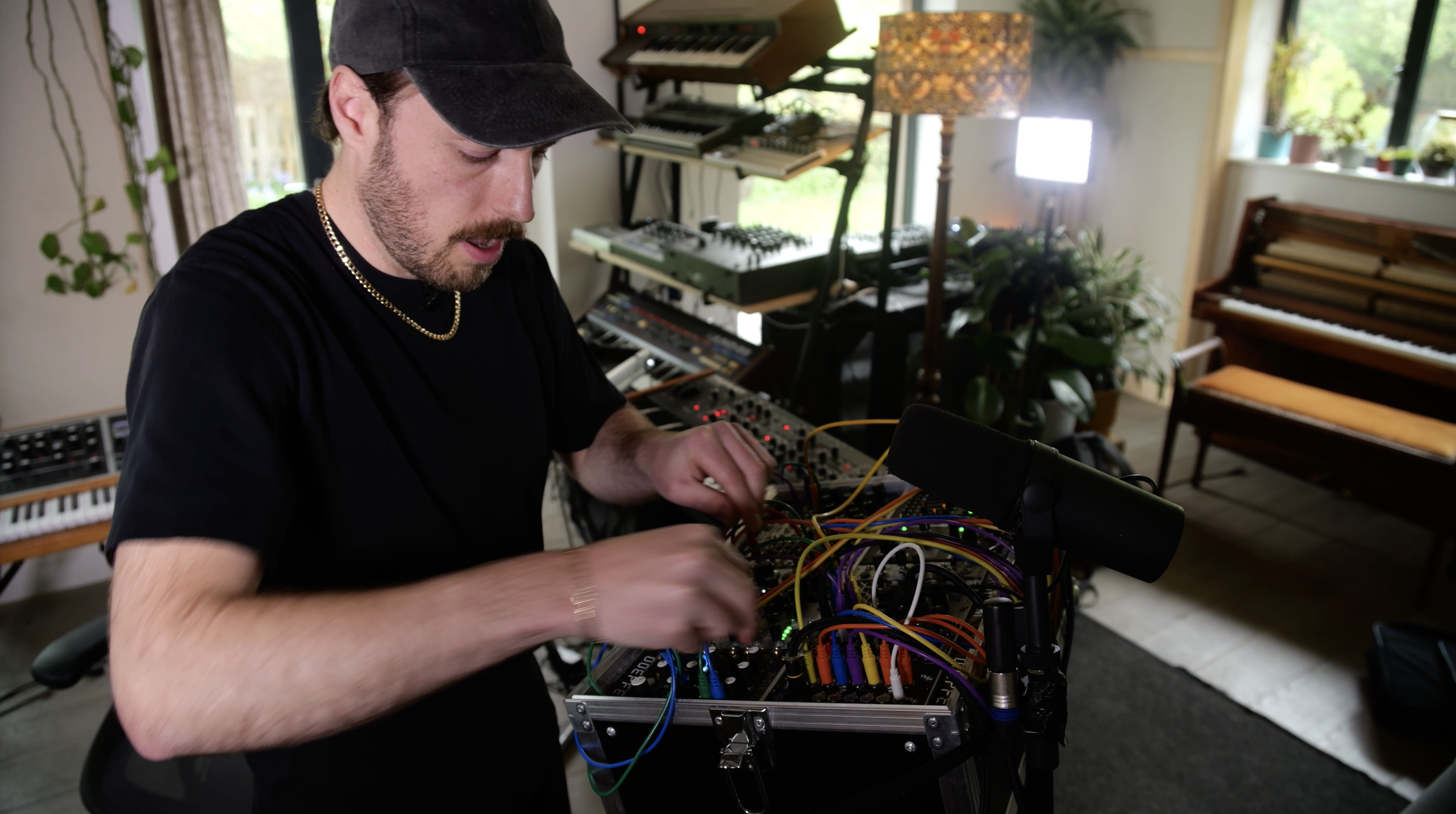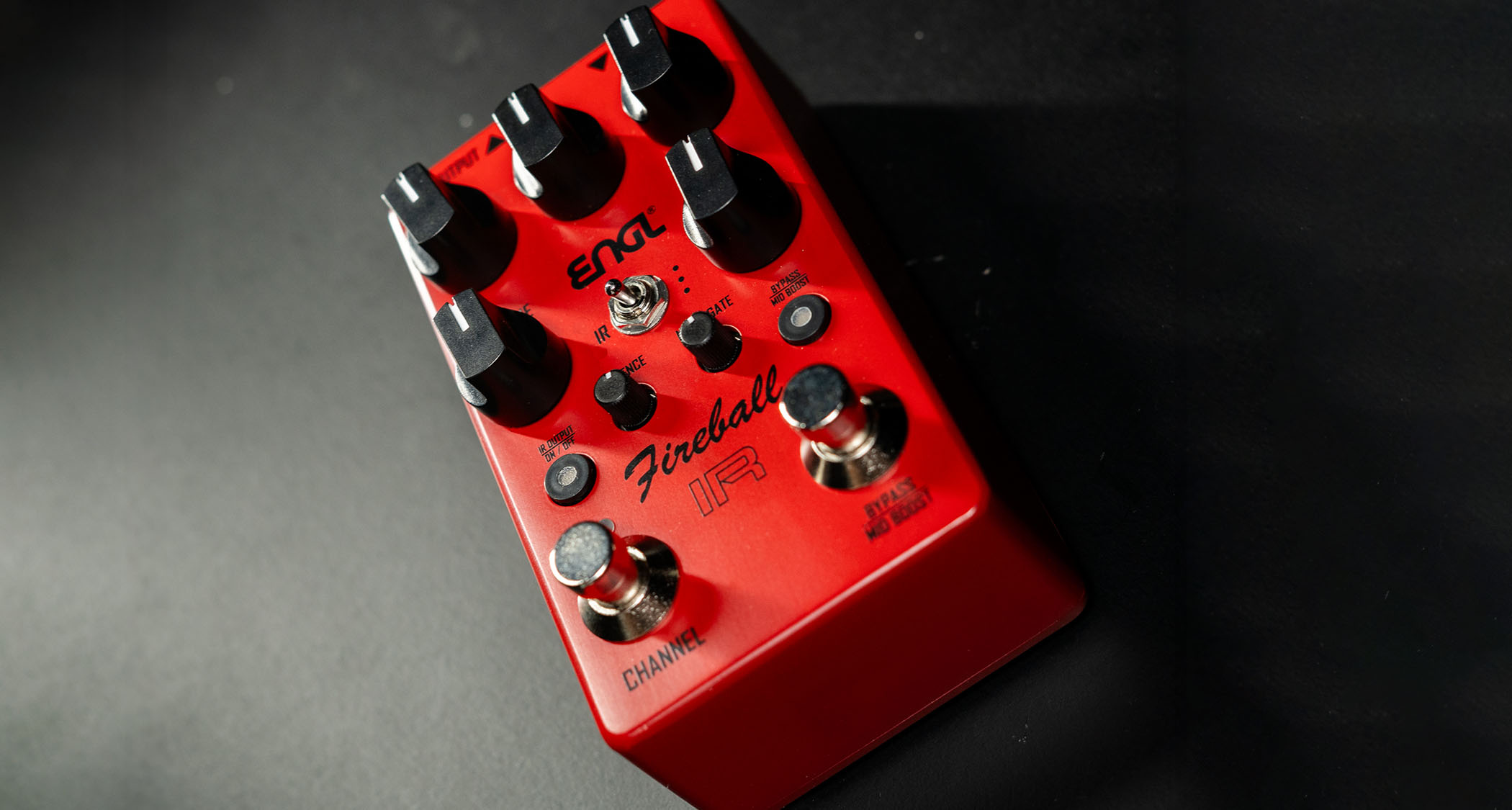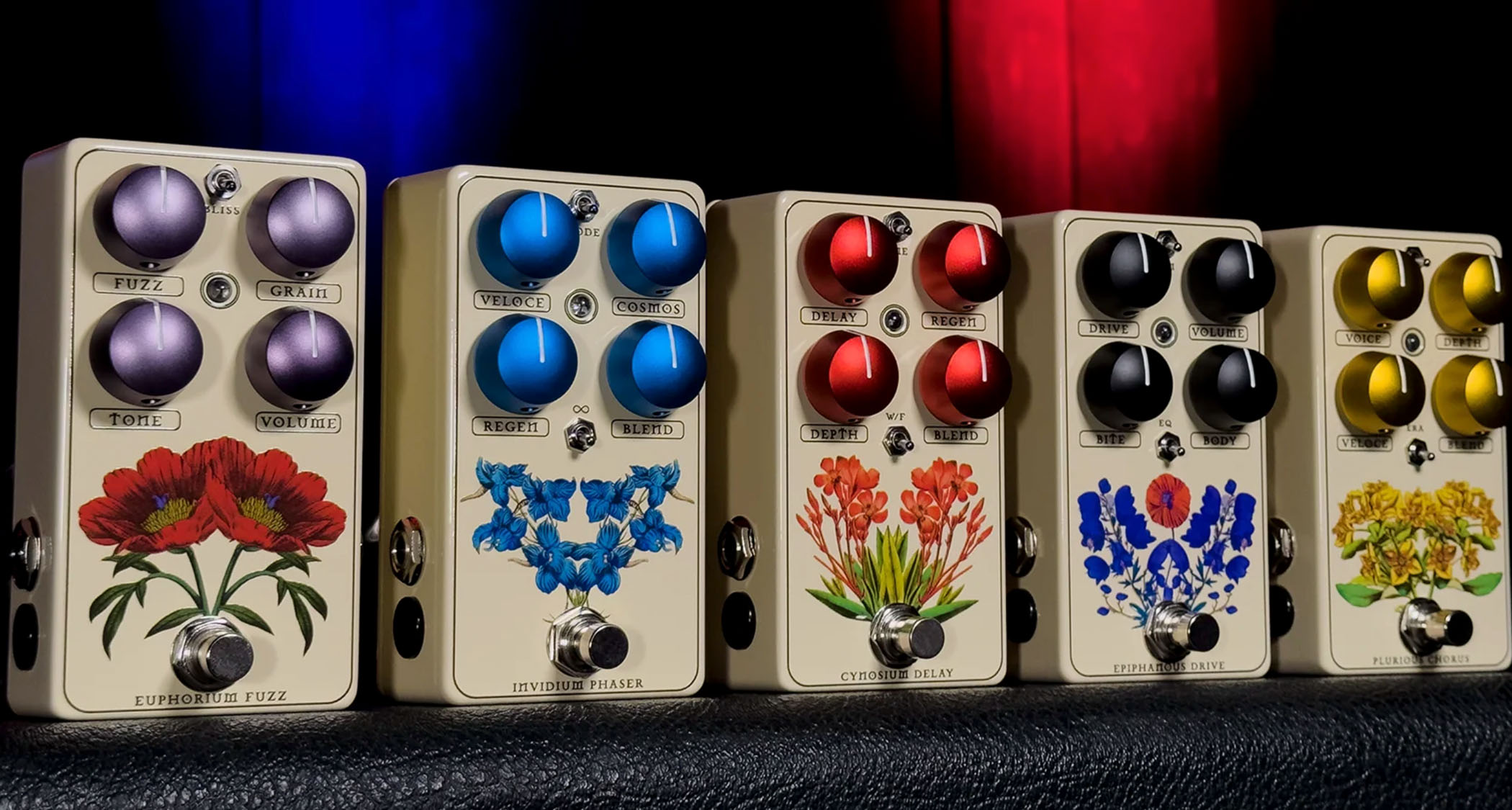The best new Eurorack modules of NAMM 2017
Some of the latest voltage-controlled wonders of the world
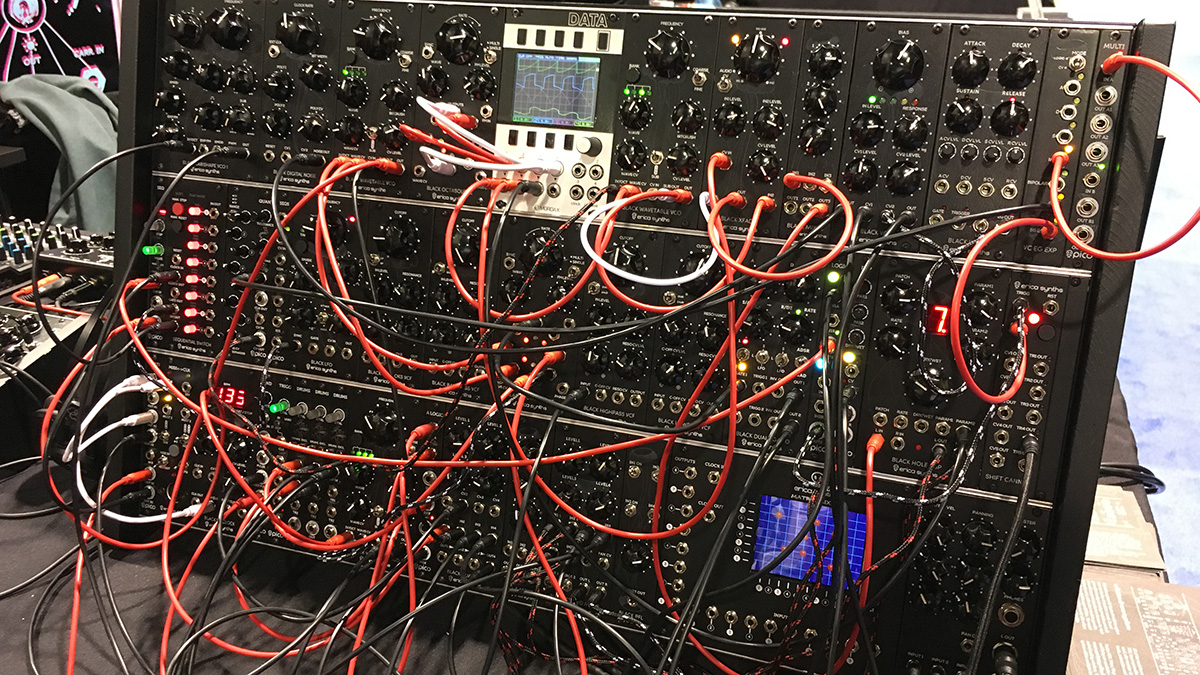
Modular mayhem
NAMM 2017: Even if you’re not a fan of the new wave of modular, or even the old wave for that matter, there’s no denying the creative potential of many of the modules we see hitting the market nowadays.
Whether you're diving down the Eurorack rabbit-hole for the first time, or you've been swimming around in the giant and growing modular pool for a while, then a place like the NAMM Show is pure Berlin techno to your minimalist ears.
The world of Eurorack is still growing and, while some have predicted that this particular bubble will burst soon, it hasn’t yet, so the doom merchants can take a step back and let the wide-eyed child, who’s squashed its face so close to the toy shop window that its nose is starting to bleed, in for a closer look at all the shiny new things on display.
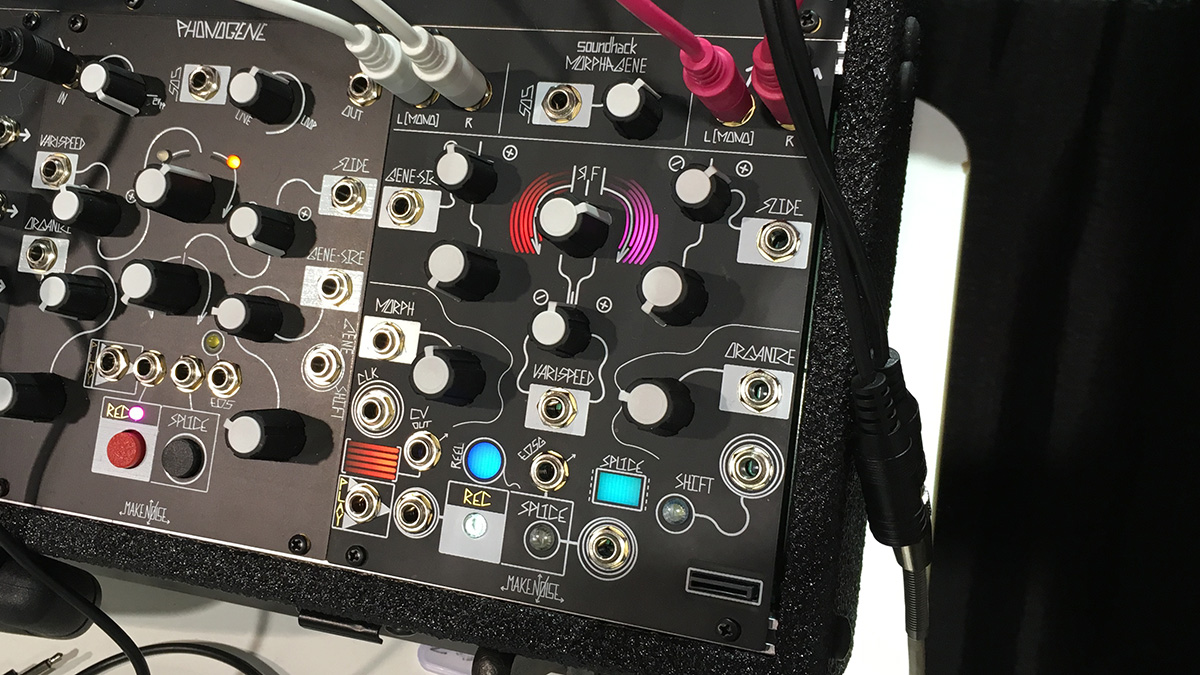
Make Noise
It’s late on the Tuesday just prior to the opening of the show and we get a call from Tony Rolando, or Mr Make Noise to you. Tony is obviously excited; who wouldn’t be, as a tour de force of modular mayhem is about to hit these shores, and everyone is running around like crazy to put the finishing touches to their booths.
Tony has invited us for a sneak preview of the Make Noise module that will be unveiled in just two days time. So, of course, we say yes and head on down to the show on the Wednesday, aka Media Preview day. Except we’re not allowed onto the show floor as our badges don’t equip us with the appropriate status. Despite our best efforts, we can't get passed the security guards to get an early look.
So it was Thursday before we could feast our eyes and ears on the new Morphagene, which is a ramped-up version of the existing Phonogene module. For the uninitiated, Phonogene takes its cues from the practices long held in the world of Musique Concrète.
Morphagene goes a step further than its predecessor with the addition of a microSD card slot and stereo I/O, so you can process, generate or capture sounds from inside or outside of your modular system.
It’s got an auto-levelling feature, so you can patch in either a line-level input or a hotter Euro-level one with ease. Samples are divided into Reels, Splices, and Genes. Multiple Reels can be stored on the SD card, and be up to 87 seconds in length. Each one can contain up to 99 Splices and each Splice can vary between 87 seconds in length, right down to a few micro seconds. This leaves you with Genes, which go even further into granular processing.
The unit carries the Soundhack logo and has been in development with Tom Erbe for the past year. Morphagene will be shipping soon and will cost $529. More information will be available imminently on the Make Noise website.
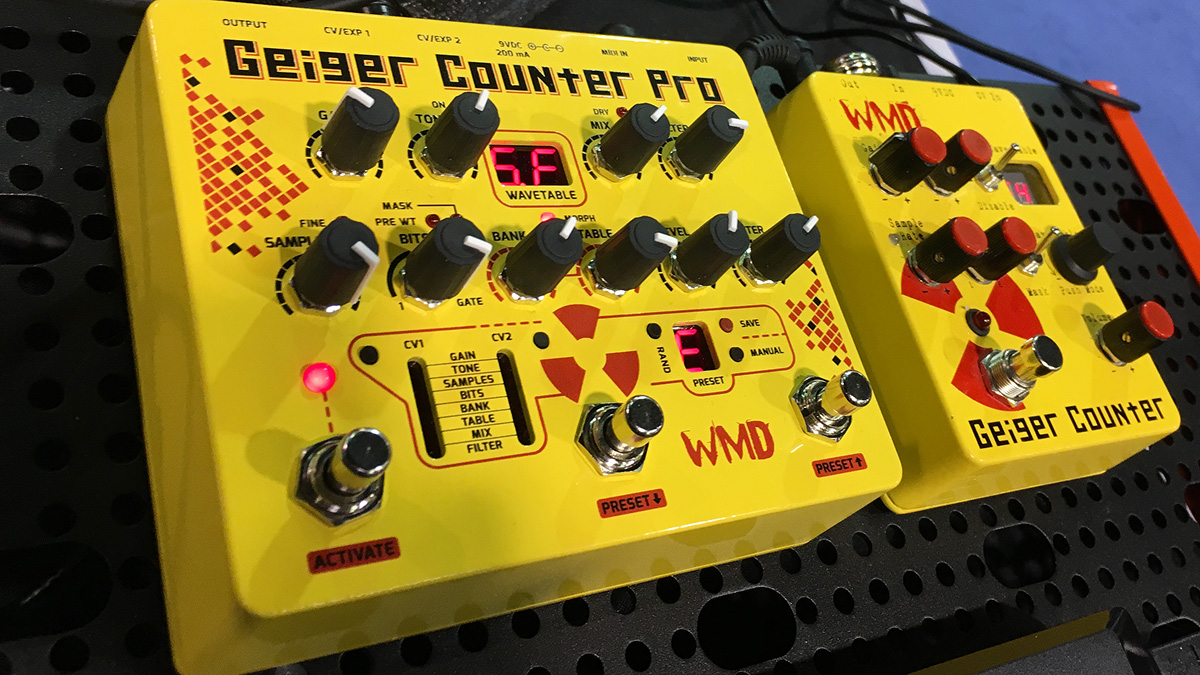
WMDesigns
For a place that is dripping in big money and big business, the DIY ethic is palpable on the Alex 4/WMD booth - a booth that holds more than 10 manufacturers, all demonstrating their wares in an audible fashion, not too dissimilar to the Sirens in Greek mythology, luring sailors to the rocks.
In this case, the biggest rock seems to be WMD itself. On a small table in front of a couple of modular setups is a familiar sight, the Geiger Counter pedal. You cannot miss the bright yellow stompbox. It is only eclipsed by the bigger and seemingly brighter yellow box next to it - yes, it is the new Geiger Counter Pro.
For those of you not familiar with the Geiger Counter, it’s a distortion stompbox that deals in heavy lashings of bitcrushing. We’re pretty sure it’s the same high-gain modern preamp driving an 8-bit computer, but this time they have added CV modulation with a choice of eight source/destinations, more wavetables and two extra stomp buttons for preset selection.
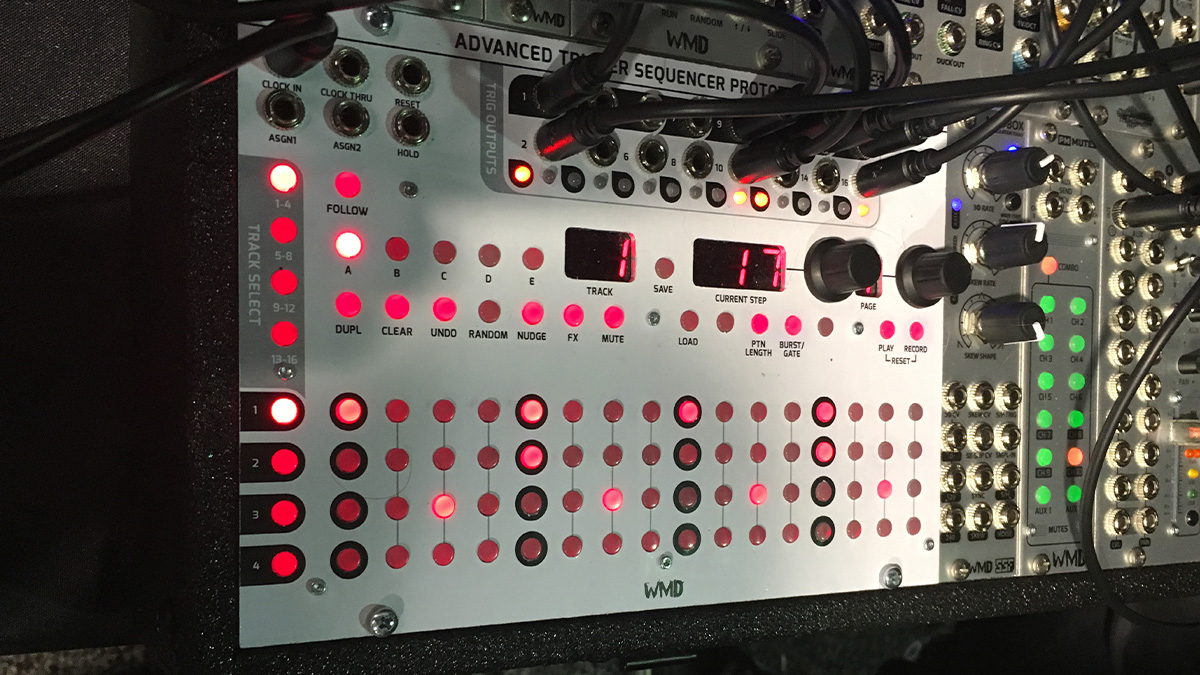
Also on the booth was a new prototype, the Advanced Trigger Sequencer. Unfortunately, we didn’t have any time to check out the full details of this module, so we’ll just leave this image here for you to drool over.
For more information check out the WMD website.
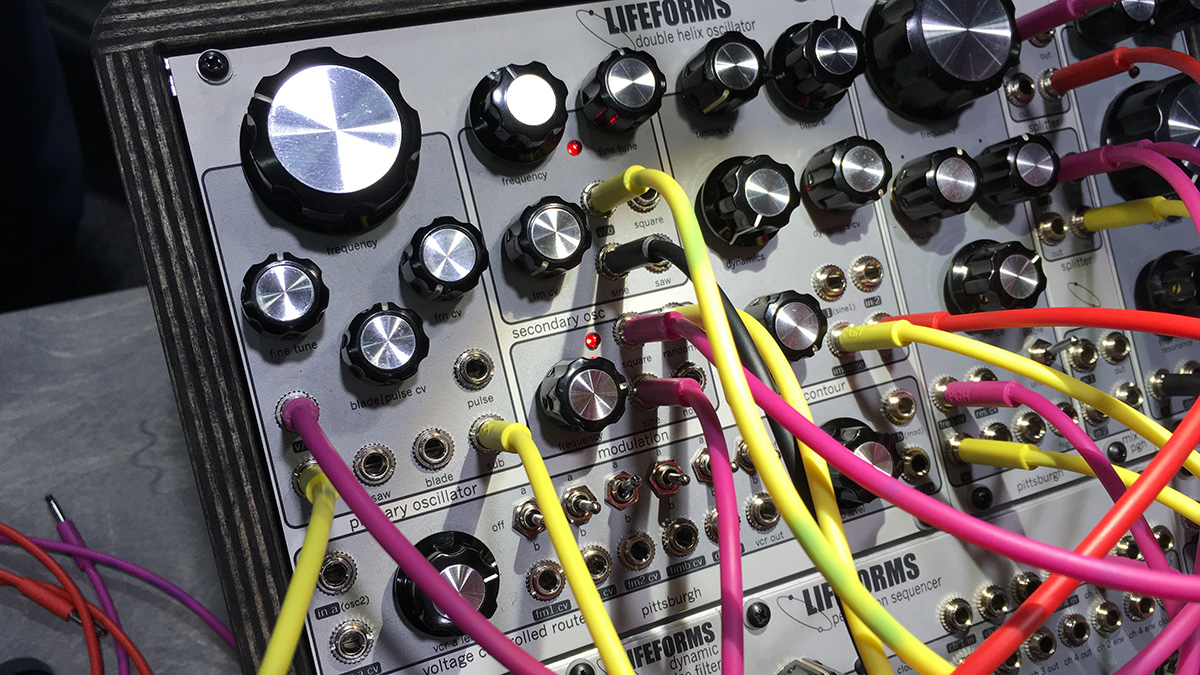
Pittsburgh Modular
Pittsburgh debuted its Lifeforms range at NAMM last year and it has grown rather a lot in just 12 months. This year, it has launched six new modules ranging from oscillators, to filters, envelopes, modulation and routing.
The main attraction was the Double Helix Oscillator, which is a modular waveform generator with analogue oscillators paired with voltage controlled shape contouring and a performance-ready voltage-controlled modulation matrix.
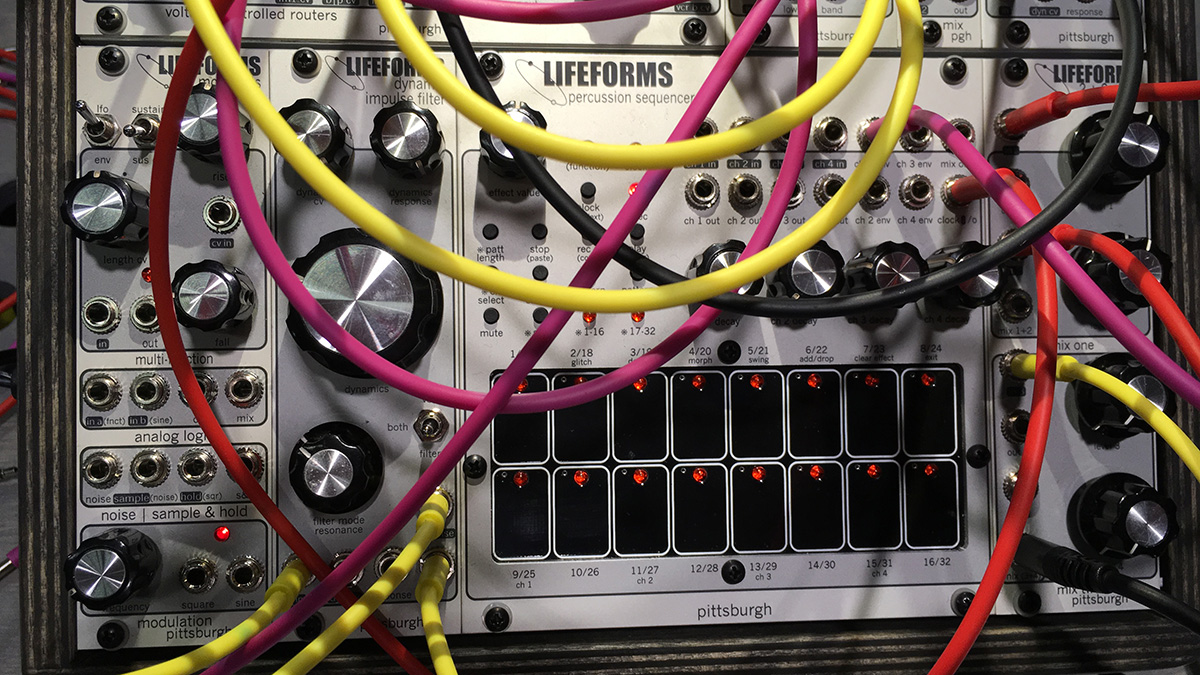
Also at the show was the Lifeforms Percussion Controller, which was launched late last year. The four-channel Percussion Controller features your classic drum machine layout, allowing for very quick and easy beatmaking.
For more information check out the Pittsburgh Modular website.
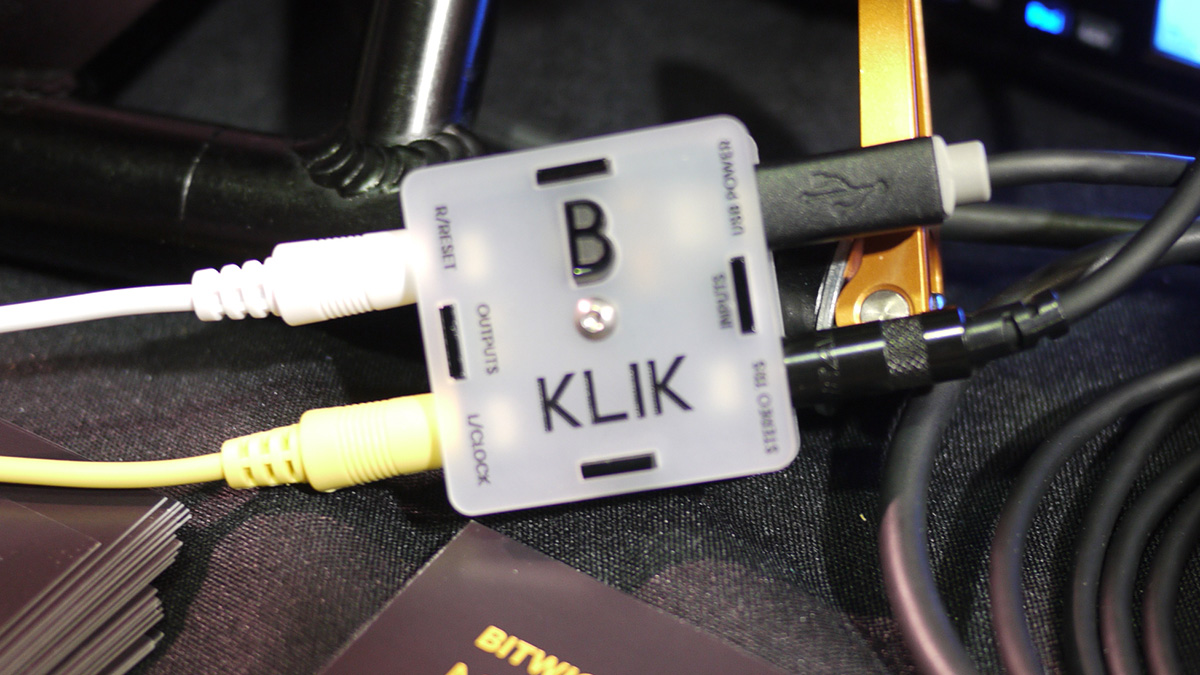
Bastl Instruments
This year Bastl Instruments hooked up with Bitwig and Irrupt audio to create a setup for the show to demonstrate Bitwig Studio 2, a bespoke Irrupt Audio sample pack and their its new module called Klik.
It is a dual line level analogue clock to modular converter. Hooking up with the new Reset and Clock devices in Bitwig, Klik will amplify the signal from your audio interface to acceptable levels for Eurorack. It does this by converting audio line level (or headphone) output signals from any audio interface and makes perfect synchronisation pulses in the modular level.
Klik is a simple, effective and cheap solution to a problem and retails at just $49. It’s available now and more information can be found on the Bastl Instruments website.
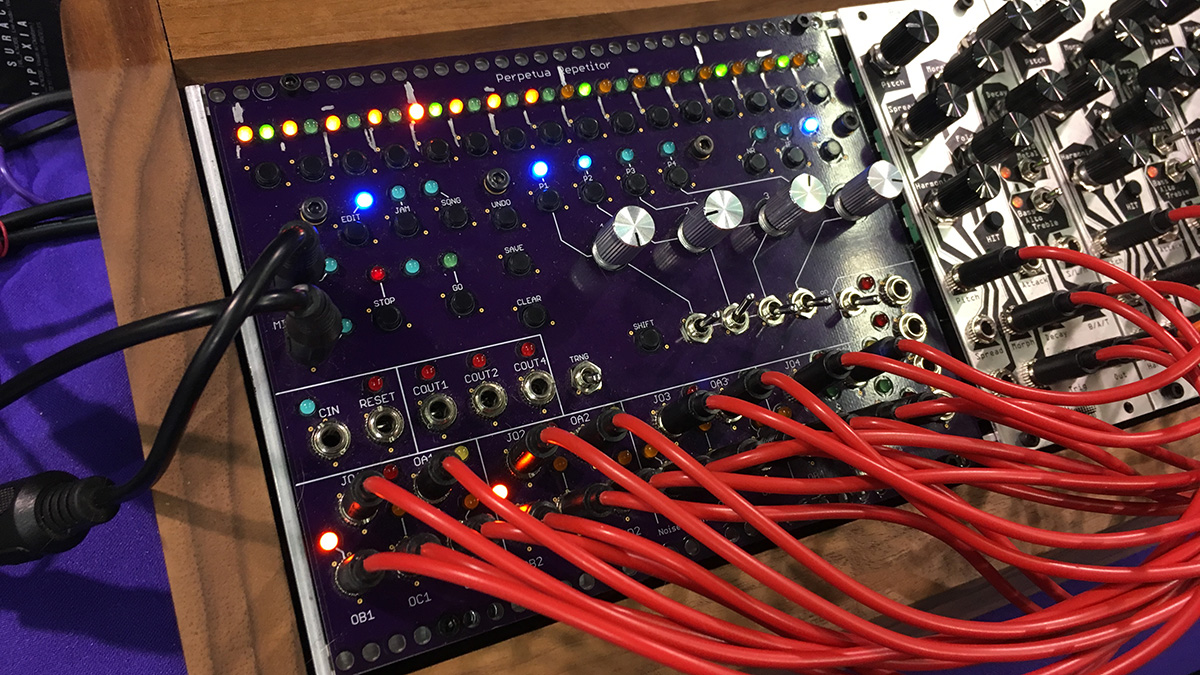
Noise Engineering
Noise Engineering was back with more purple prototype modules and some more lessons in Latin. The two modules that caught our eye were the Loquelic Iteritas Percido and Perpetua Repititor.
The original Loquelic Iteritas module was a multiple-algorithm digital oscillator and was often seen used as the basis of drum sound generation. The new Percido edition has been reimagined as a proper drum oscillator, with the addition of an envelope and a VCA.
We didn’t get a chance to see the Perpetua Repetitor in action as time was not on our side, so we’re not even sure if it was a working unit or not. However, we can tell you it is a four-track sequencer, equipped with MIDI Ins and Outs, and each track has three CV outs in addition to CV/Gate. Forget what it does for now and check out their Instagram for a quick look at the module in ‘Vegas mode’.
For more information, check out the Noise Engineering website.
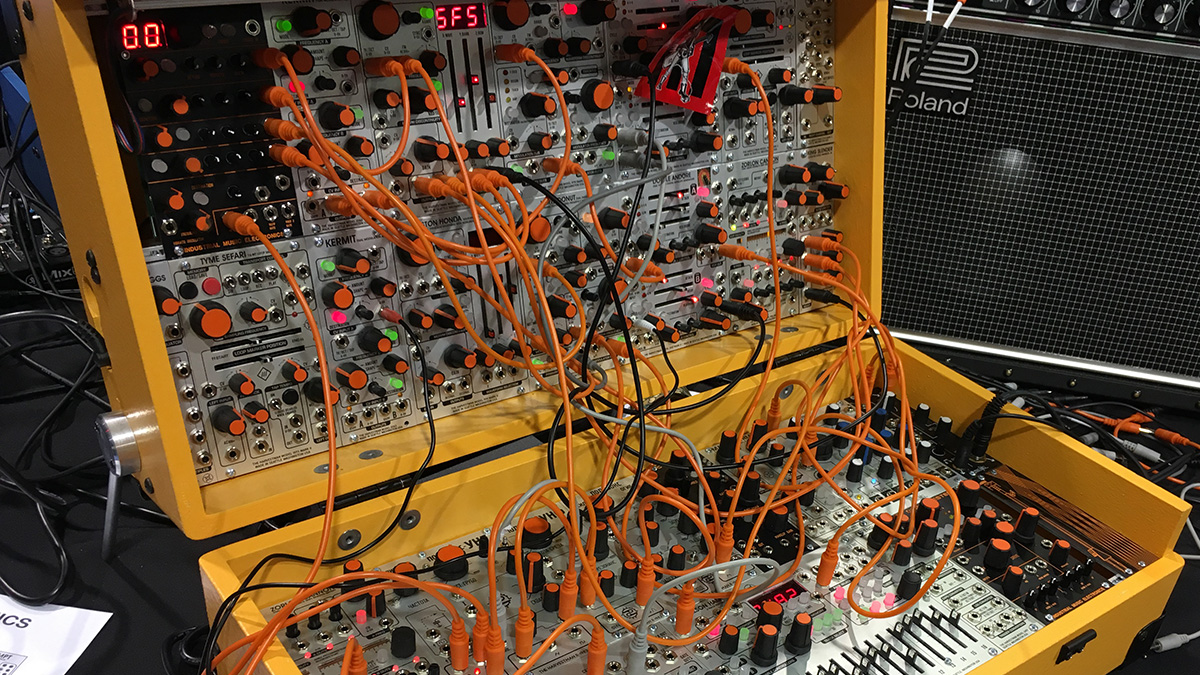
Industrial Music Electronics
Formerly operating as The Harvestman, Industrial Music Electronics brought three new modules to the show: Argos Bleak, Bionic Lester MKII and Contempt.
Bleak is a 2-in, 4-out pitch CV quantiser that gives you realtime channel control over octave, semitone, slew limit and modulation. There are 32 scale presets to choose from and an integrated vibrato generator.
The second iteration of the Bionic Lester improves on the filter’s feature set with the addition of equal control over both a and B frequency channels, including attenuverters on the cutoff, resonance and mixer stages.
Finally, Contempt is an analogue dynamics processor with separate compressor and gate sections with three different behaviour modes per section. The Sidechain section features fade control between both internal and external sidechains.
There’s no word on price but the modules should become available in the Spring. More information can be found on the Industrial Music Electronics website, as soon as it’s finished.
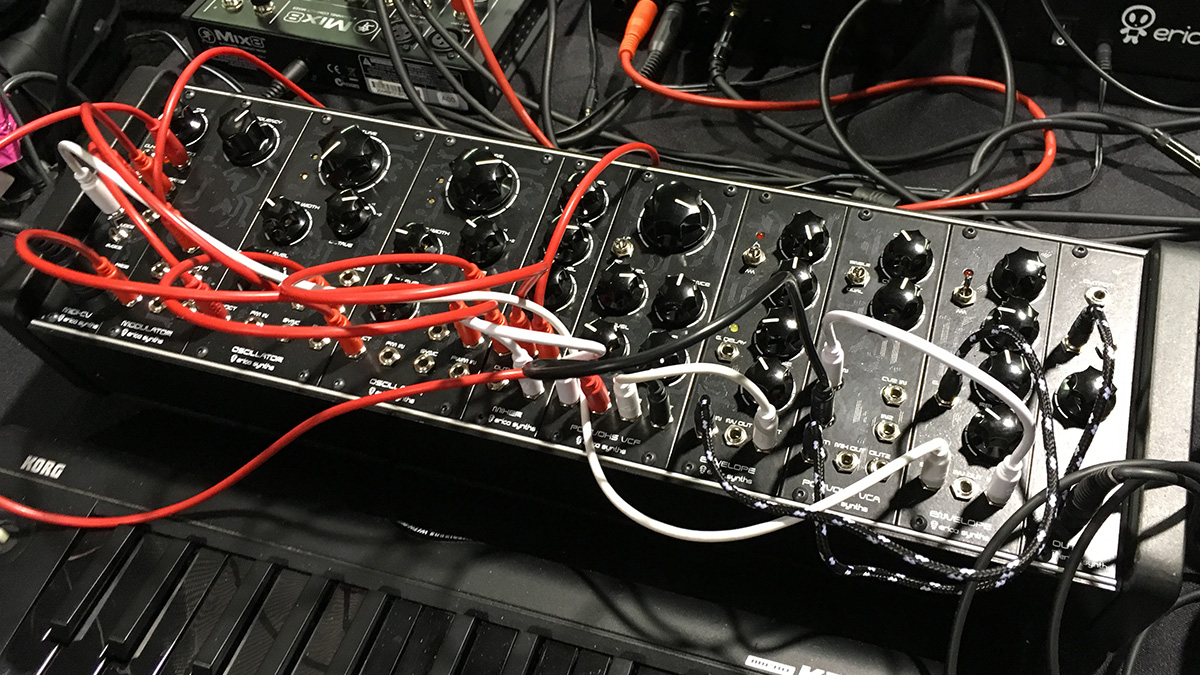
Erica Synths
Latvian modular manufacturer Erica Synths hit this year’s show with a whole bunch of new products.
Reaching back to the company’s DIY roots is its refreshed Polivoks-inspired system. The modules have been fully redesigned, with added features and more modular functionality.
You can buy each module as a PCB w/panel, or as a full kit. All of the kits will be available from March, but we’re not entirely sure on prices just yet.
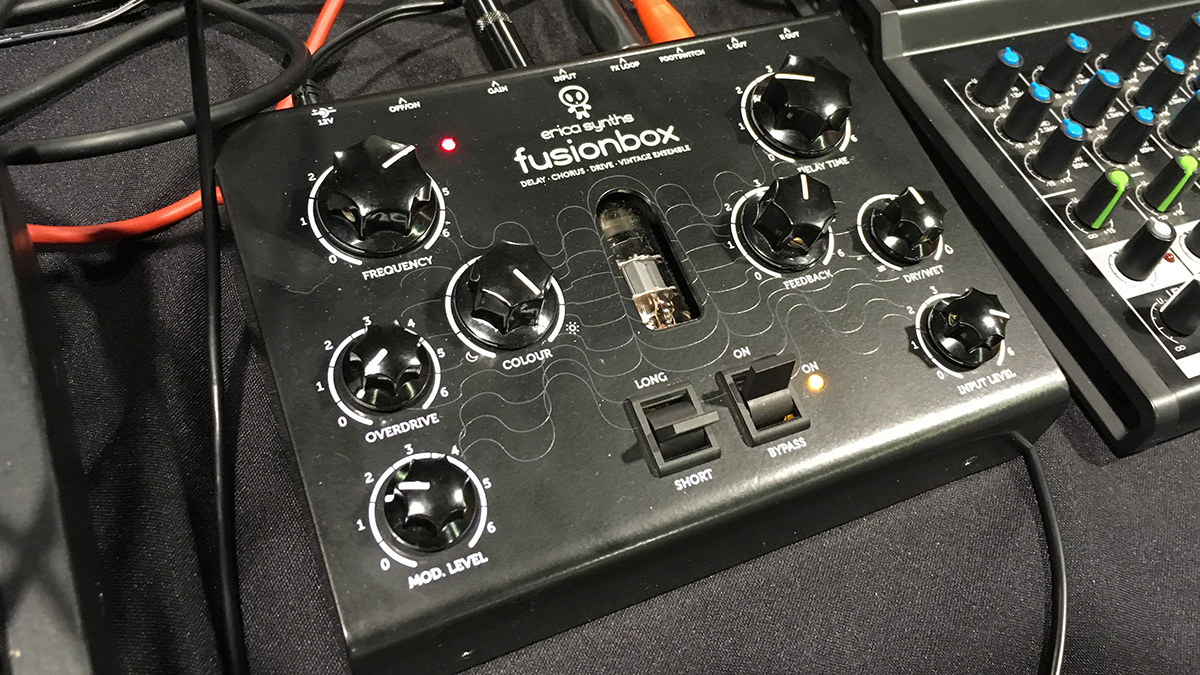
Also proudly paraded on the Erica Synths booth was the new Fusion box. Inside there are two BBD chips, an LFO to modulate the delay time, and short and long delay-time switching. There’s also boostable input gain, which is ideal for guitars.
Fusion box has a stereo output and a footswitch for bypassing the effect. It’s almost the perfect sound mangling box; you’ve got the shorter delay times for those flanging effects, long delay time (of up to half a second) for more washed out and cascading sounds, and the extra grit and growl courtesy of the valve and input boost. We can definitely see this one doing rather well and can’t wait to get our hands on it.
Not happy with leaving it there, Erica Synths has also added a few new members to its Black range, and the pick of the bunch has to be the Octasource.
It’s an LFO that can be manually and CV controlled. It’s quite a flexible beast, with one of eight waveforms available on eight outputs, phase shifted by 45 degrees. Or, you can have all eight waveforms simultaneously on all outputs. Furthermore, waveform selection, phase shift and LFO rate are CV controlled, and the rate can be synced to an external clock signal.
All in all, it’s quite an impressive haul of gear from the Latvian crew, and more information can be found on the Erica Synths website.
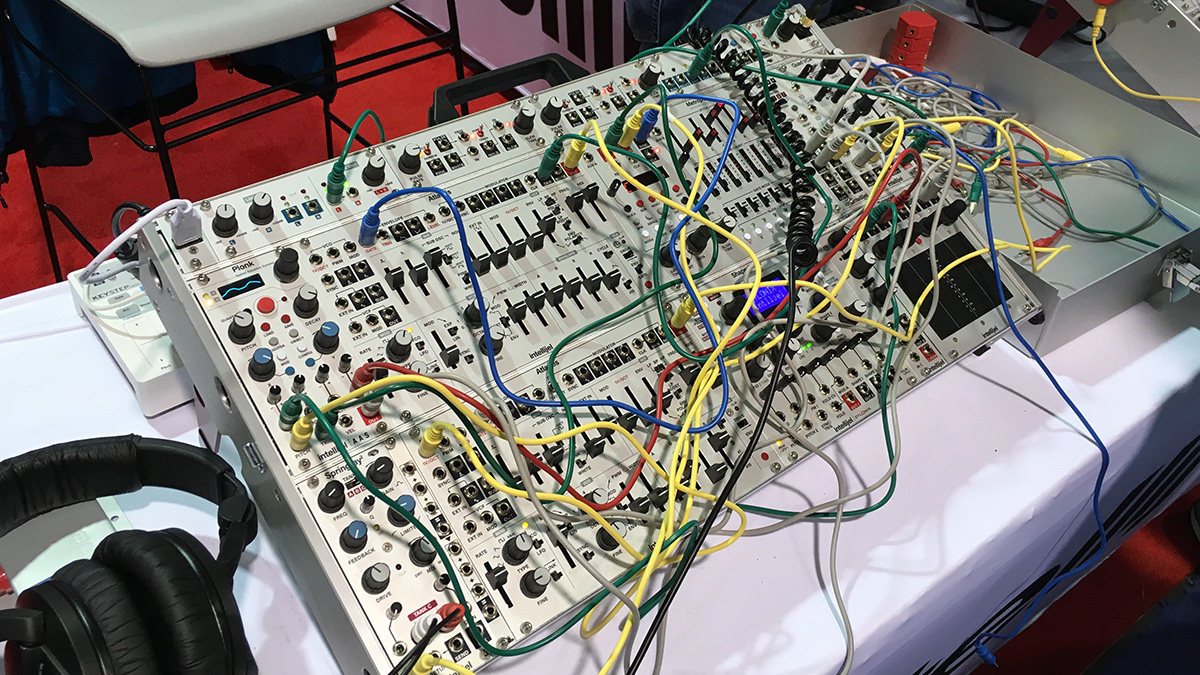
Intellijel
Not ones to be out done by the like of Erica Synths, Intellijel rocked up to the show with a whopping 10 new products. Four of them caught our eye - Plonk, Shifty, Tetra and Chord.
Plonk is a physical-modelling, two-voice polyphonic percussion synth that was created in collaboration with Applied Acoustics Systems.
The Resonator section models strings, beams, marimbas, drumheads, membranes and plates with additional synthesis methods. In the Exciter section you’re given “realistic” mallet models and flexible noise sources.
Shifty is an alternative type of sequencer and one that Intellijel believes hasn’t been seen in Euro just yet. It was born out of a desire to create sequences similar to those on the Korg Mono/Poly, where every step goes to a new voice.
The unit is made up of two main modes: Voice and Shift Register. In voice allocate mode the direction switches are for Up, Down, Pingpong and Random. Whereas, in Shift Register mode, the directions are Up, Down, Toggle (via reset) and Scatter.
You’ll be able to update the firmware via USB and it is presumed that alternative modes of functionality and special features we will be added.
Tetra is a multi-dimensional performance touch controller. It features a variety of different performance modes, each with four individual controls that can be adjusted with the pressure-sensitive touch sliders.
Chord mode enables you to dial in the base note and intervals and to go through the octaves a semitone at a time. There’s also a chord-type selection mode; chords can then be individually inverted and the notes rotated.
This module is still in the prototype zone, so we're not sure when it’ll land exactly, but out of all the new modules, it is by far our favourite. There’s quite a bit planned for this module with more features set to be available further down the road.
For more information, check out the Intellijel website.
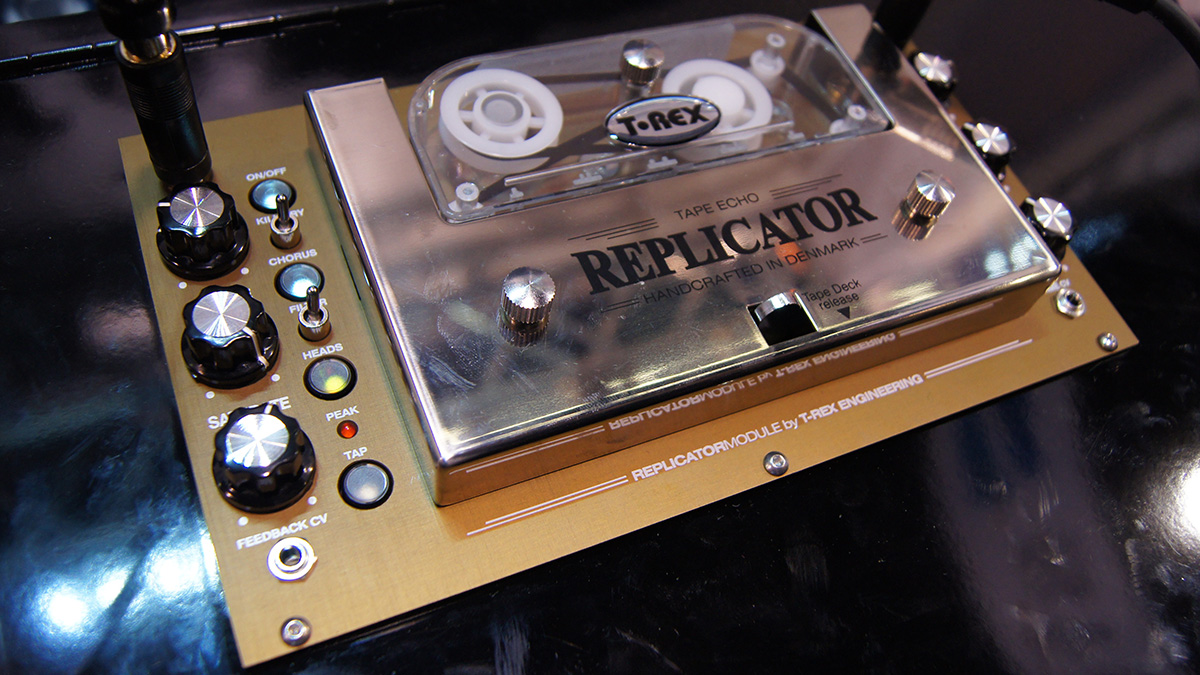
T-Rex
At last year’s show, there was quite a buzz around the T-Rex Replicator pedal. It brought good ol’ tape delay into a very workable package and with tap-tempo control, too.
Well, fast forward 12 months and they T-Rex has snuck the unit into a Eurorack module -a wise decision we’re sure you’ll agree.
Everything about tape echo is ace - even the upkeep of the heads and replacing the tape. It’s all part of the experience.
The Replicator features two playback heads, one of which is tap-tempo controllable (manually and via CV). The other is independently bypass-able. The feedback can be wound right up to self-oscillation, which is also controlled via CV, and they’ve also added a filter switch to dampen the highs and noise.
While it’s a lovely looking thing to have in your rig, the Replicator will set you back over £700. It is, however, available now, and you can check out more information on the the T-Rex website.

I take care of the reviews on MusicRadar and Future Music magazine, though can sometimes be spotted in front of a camera talking little sense in the presence of real musicians. For the past 30 years, I have been unable to decide on which instrument to master, so haven't bothered. Currently, a lover of all things high-gain in the guitar stakes and never one to resist churning out sub-standard funky breaks, the likes of which you'll never hear.


"I said, ‘What’s that?!’ He looked at me strange and said, ‘We’re line checking. We’ll be gone in five minutes’. I said, ‘You won’t - meet me in that room in 10 minutes’": How a happy synth accident inspired a US number 1 single for Terence Trent D’Arby
What’s the buzz? Meet Yellowjacket, Cherry Audio's recreation of EDP’s trend-setting Wasp from 1978
"I said, ‘What’s that?!’ He looked at me strange and said, ‘We’re line checking. We’ll be gone in five minutes’. I said, ‘You won’t - meet me in that room in 10 minutes’": How a happy synth accident inspired a US number 1 single for Terence Trent D’Arby
What’s the buzz? Meet Yellowjacket, Cherry Audio's recreation of EDP’s trend-setting Wasp from 1978

